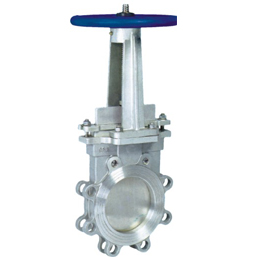electric check valve
Understanding Electric Check Valves Function, Design, and Applications
Electric check valves are innovative devices designed to prevent the backflow of fluids while allowing unidirectional flow, all powered by electric actuators. These valves are commonly utilized in various applications across industries such as oil and gas, water treatment, and HVAC systems. Their ability to automate flow control enhances system efficiency, improves safety, and minimizes maintenance efforts. In this article, we'll explore the functionality, design, and applications of electric check valves.
Functionality of Electric Check Valves
The primary function of an electric check valve is to maintain the direction of flow in a piping system. Unlike traditional check valves that rely on gravity or back pressure to close, electric check valves use an electric actuator to control the valve's position actively. This feature allows for precise flow control and quick responses to changing conditions within a system.
When the system is engaged, the electric actuator opens the valve, facilitating fluid flow in the desired direction. Should there be a drop in pressure or reverse flow, the actuator automatically closes the valve, preventing backflow, which could cause contamination or damage to the system. The ability to monitor and adjust the valve’s operation enhances overall system efficiency, particularly in complex processes where flow rates may vary significantly.
Design Considerations
Electric check valves come in various designs and configurations, including globe, ball, and butterfly types, each tailored to specific applications and fluid dynamics. The choice of material also plays a crucial role in valve performance; common materials include brass, stainless steel, and various plastic polymers that offer resistance to corrosion and wear.
One of the essential features of electric check valves is their integration with control systems. Many modern electric check valves can interface with programmable logic controllers (PLCs) and other automation systems, allowing for real-time monitoring and control. This integration enables operators to adjust valve settings remotely and obtain data for maintenance and troubleshooting.
electric check valve

Advantages of Electric Check Valves
The advantages of implementing electric check valves in various industrial applications are manifold. First and foremost, their ability to provide quicker response times than traditional valves enhances system performance, particularly in processes that require high precision. Additionally, electric check valves reduce the risk of human error, as they can be set to respond automatically to predefined conditions.
Another significant benefit is the reduction in maintenance requirements. Traditional check valves often suffer from mechanical wear over time, leading to failures that necessitate regular inspections and replacements. In contrast, electric check valves, equipped with advanced features, can reduce these occurrences and extend operational lifespans.
Applications
Electric check valves are versatile and find applications across numerous fields. In the water treatment industry, they help regulate the flow of treated water, preventing contamination from untreated sources. In the HVAC sector, they control the flow of refrigerants and other fluids, ensuring efficient operation of cooling and heating systems.
Moreover, the oil and gas industry utilizes these valves to manage flow in pipelines, enhancing safety by preventing dangerous backflows that could result in hazardous situations. Electric check valves also feature prominently in pharmaceuticals, where maintaining the integrity of fluid processes is critical for product quality and safety.
Conclusion
Electric check valves are invaluable components in modern fluid control systems, offering enhanced efficiency, reliability, and safety. Their automated operation, design flexibility, and wide-ranging applications make them an essential choice for many industries. As technology continues to evolve, we can expect further advancements in electric check valve design and functionality, paving the way for even more innovative solutions in fluid management. By understanding their importance and potential, industries can better leverage electric check valves to optimize their operations and ensure seamless fluid flow.
-
The Key to Fluid Control: Exploring the Advantages of Ball Valves in Industrial SystemsNewsJul.09,2025
-
The Versatile World of 1, 2, and 3 Piece Ball ValvesNewsJul.09,2025
-
Stainless Steel Ball Valves: The Ideal Choice for Efficient Flow ControlNewsJul.09,2025
-
Optimizing Fluid Control with Ball Float ValvesNewsJul.09,2025
-
Manual Gate Valves: Essential for Control and EfficiencyNewsJul.09,2025
-
Everything You Need to Know About Butterfly ValvesNewsJul.09,2025
-
The Versatility of Wafer Type Butterfly ValvesNewsJul.08,2025




